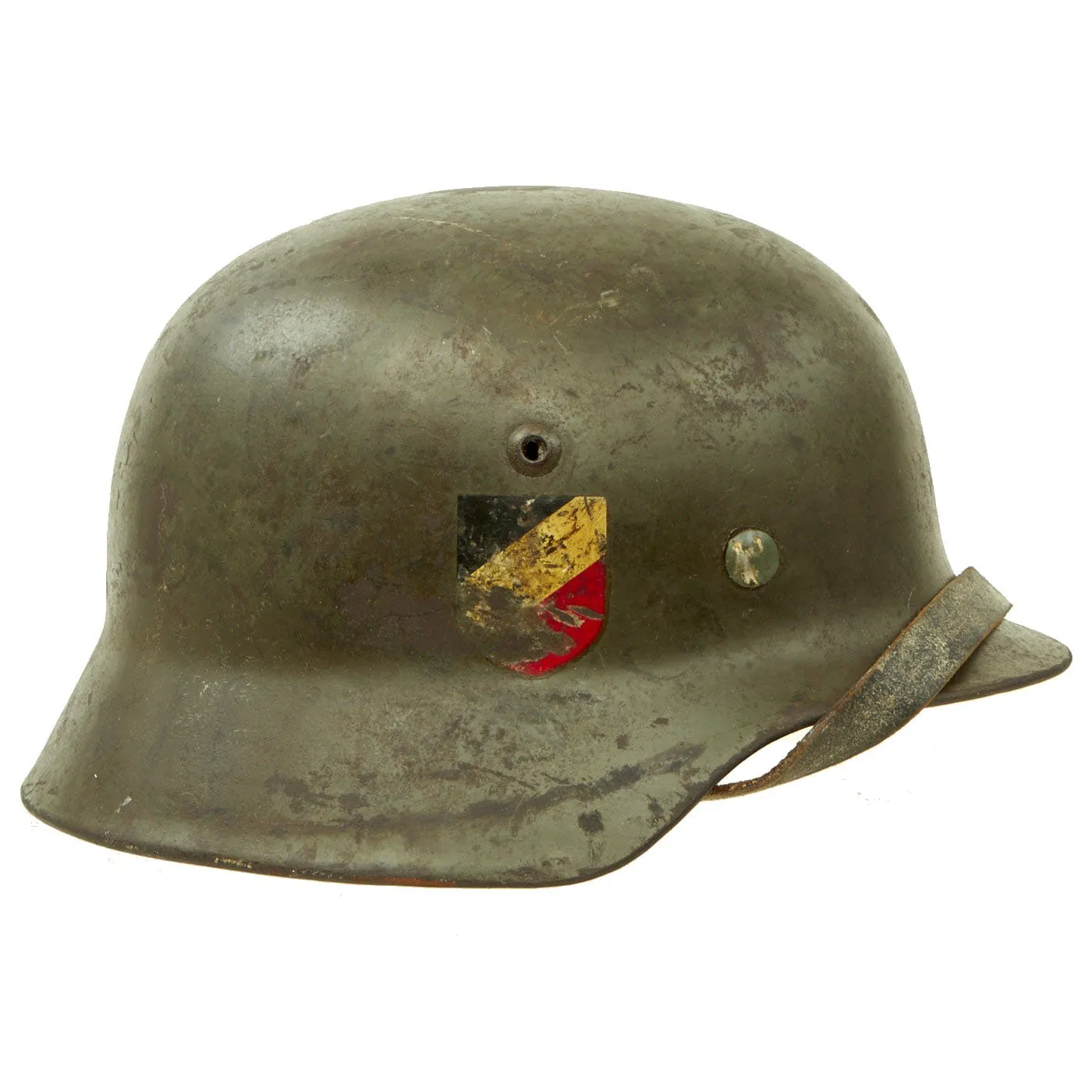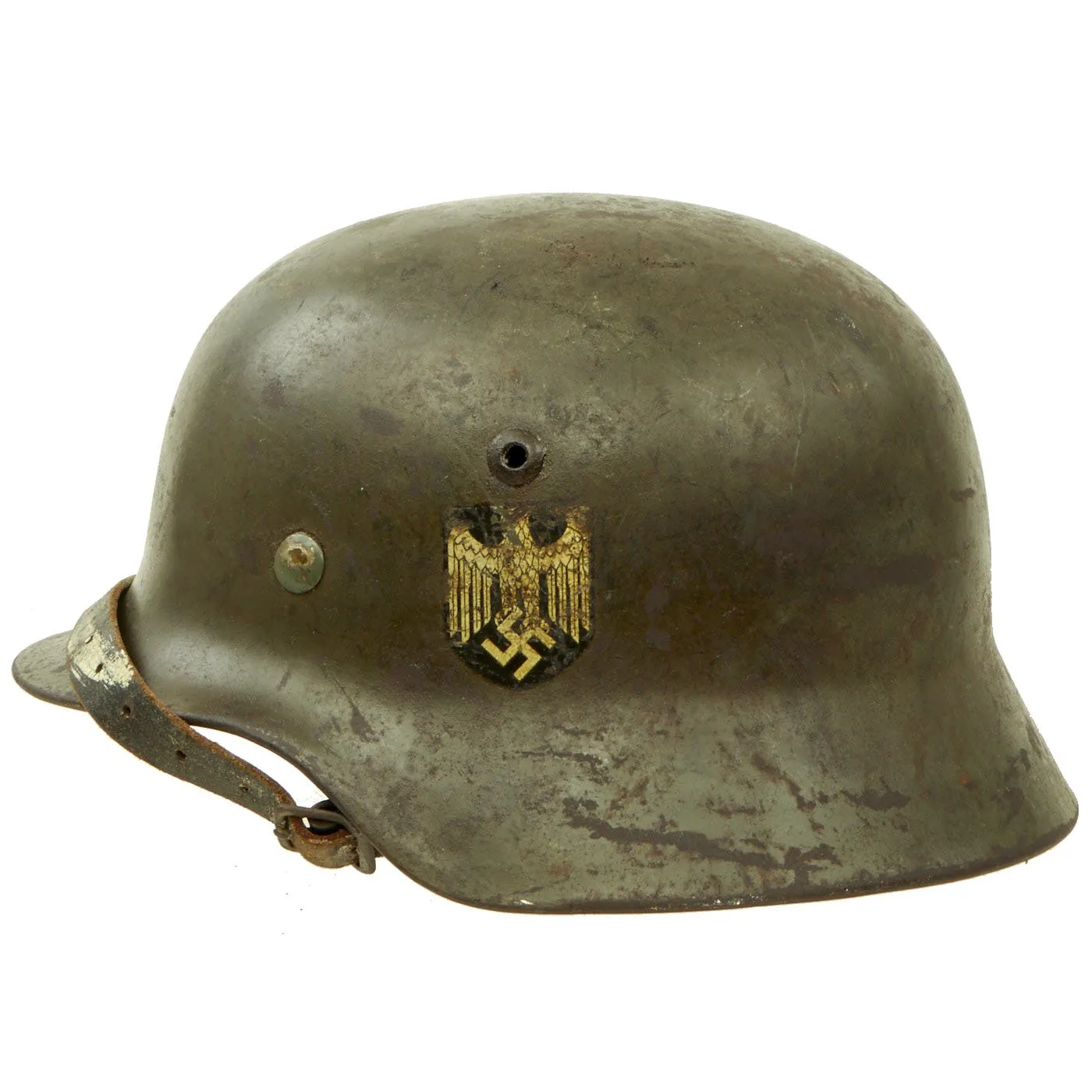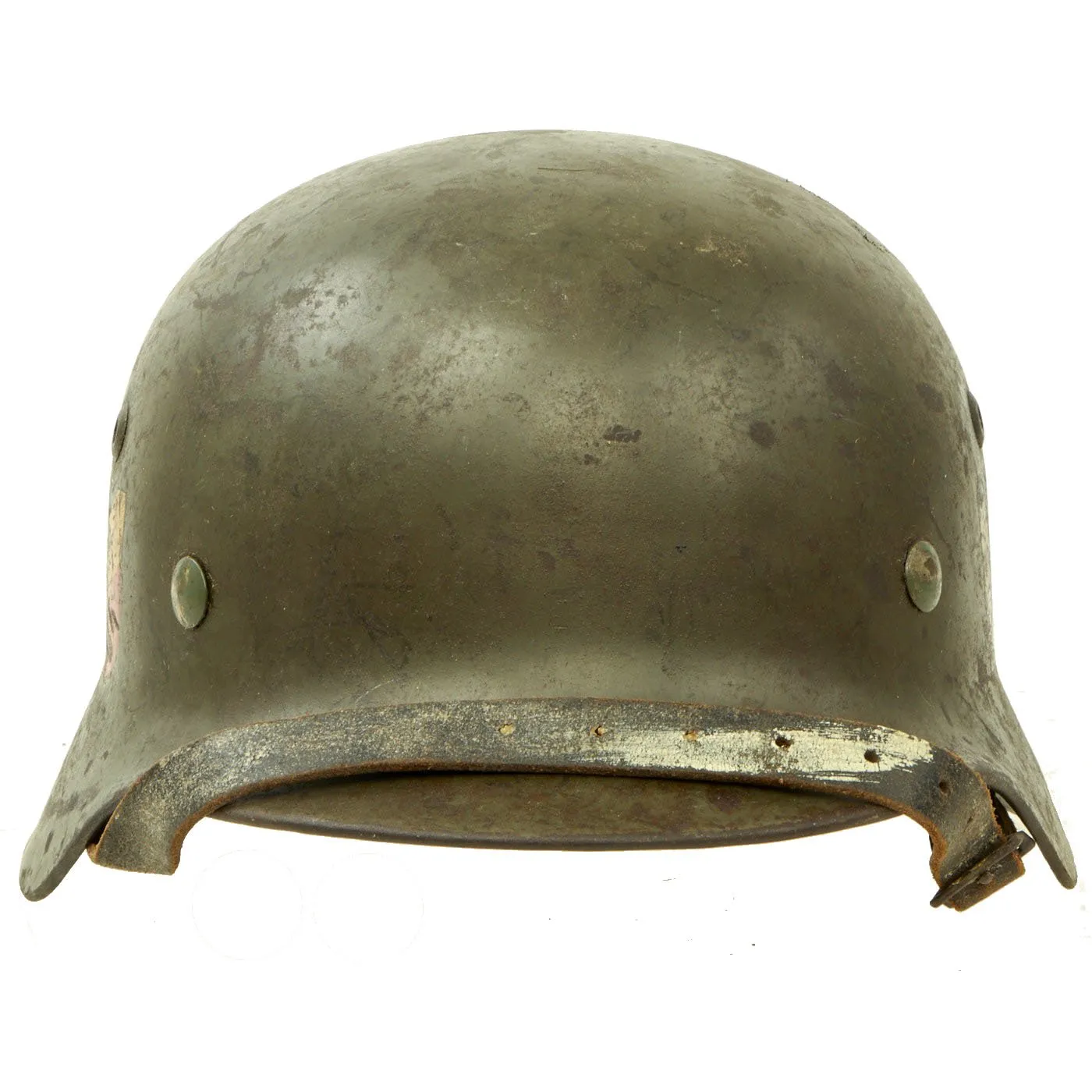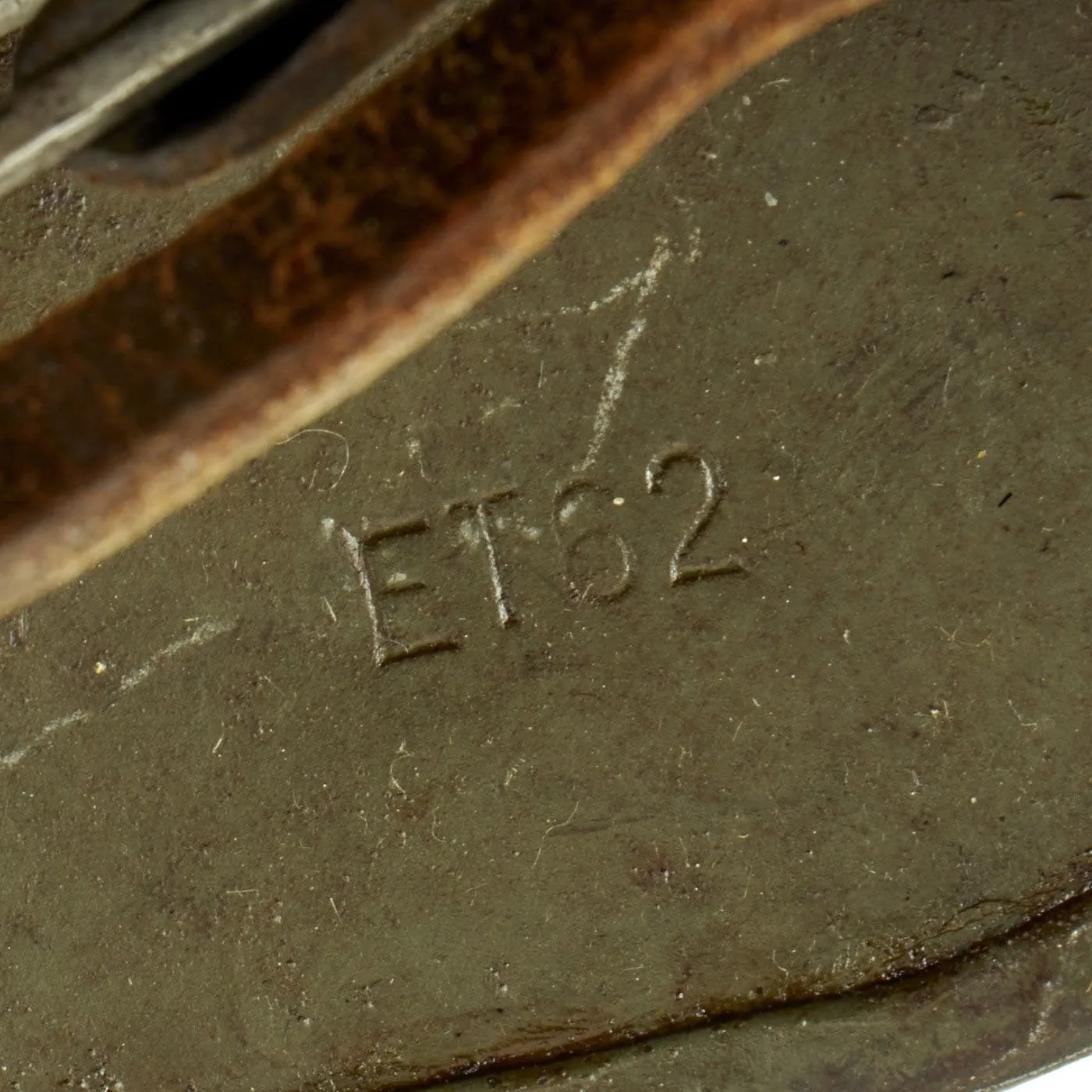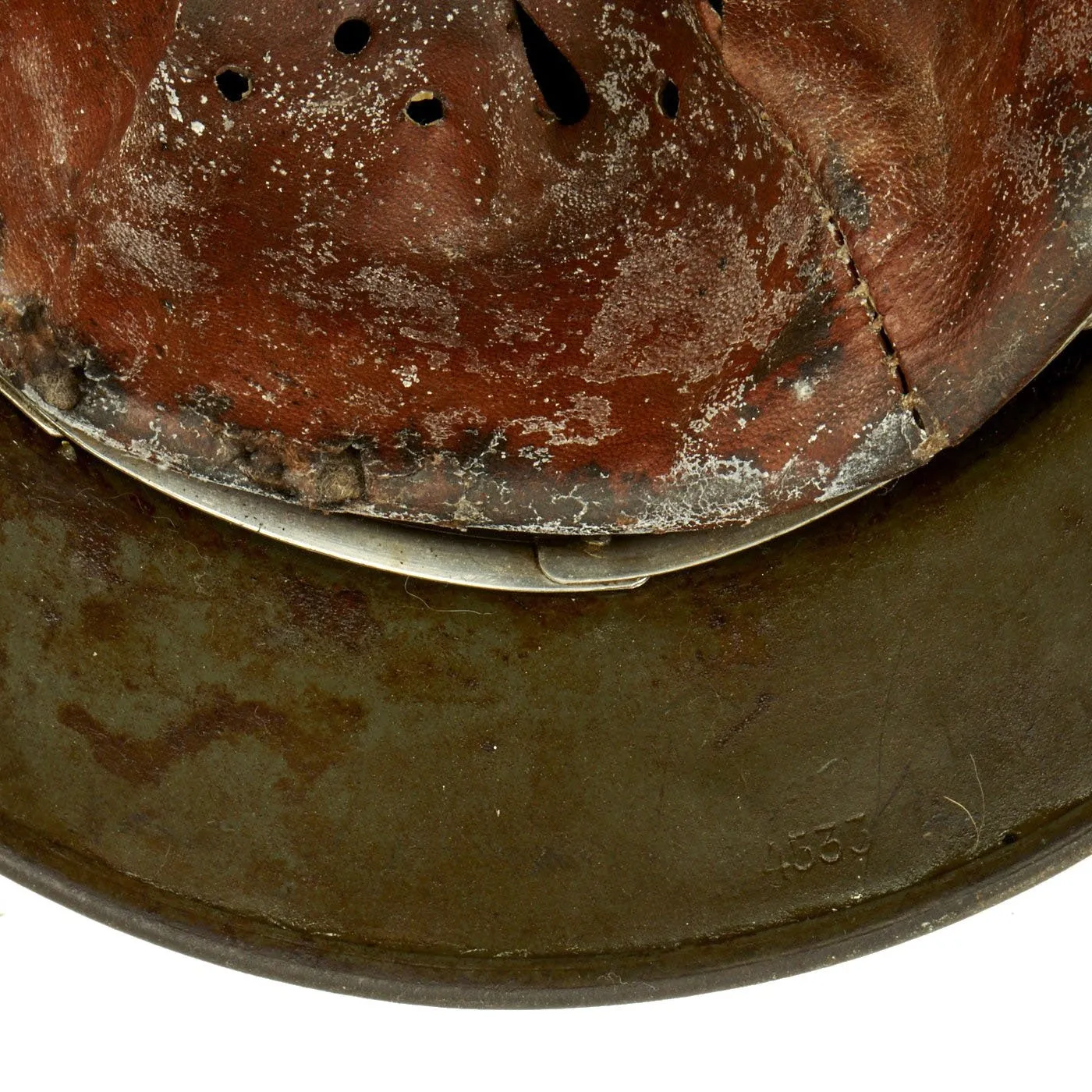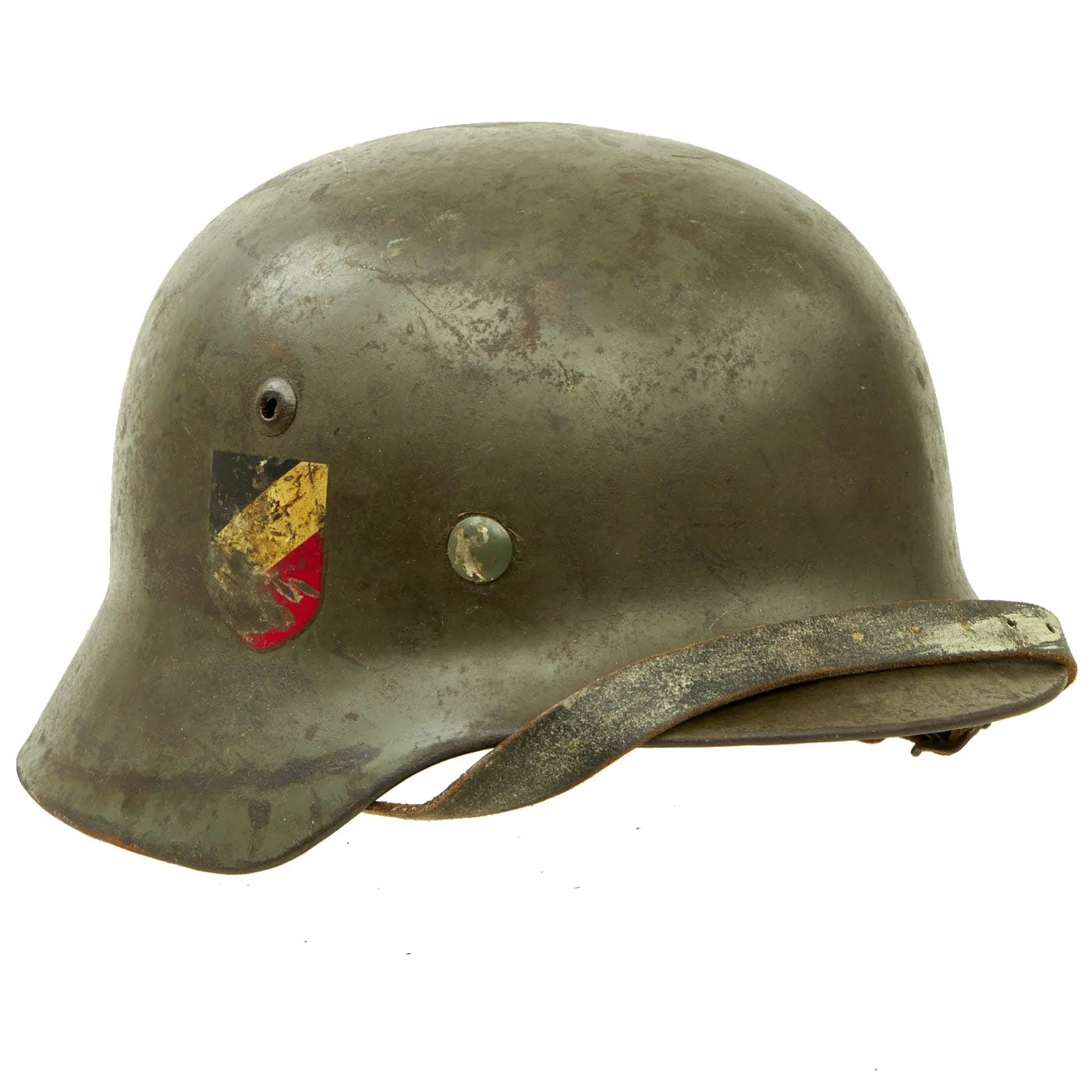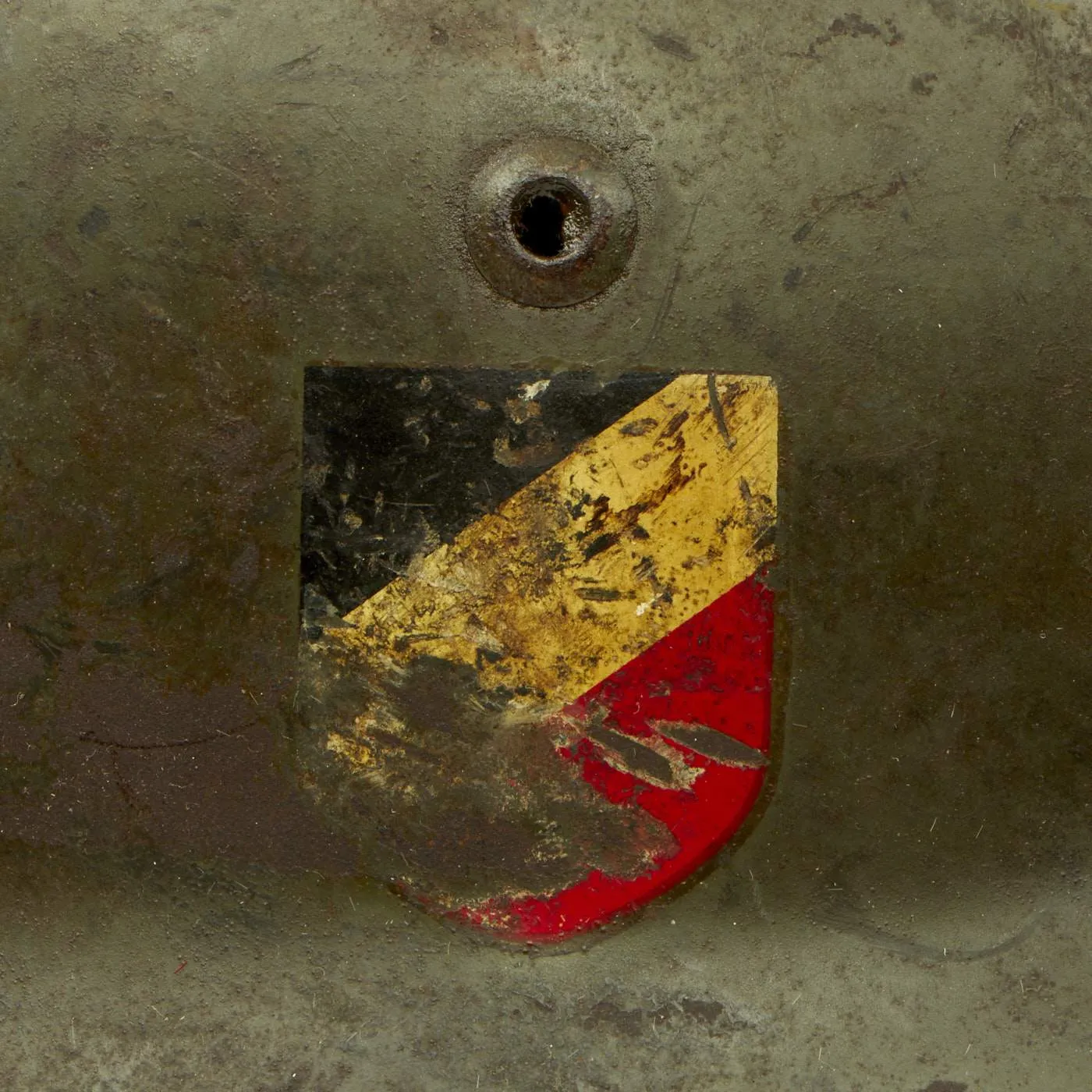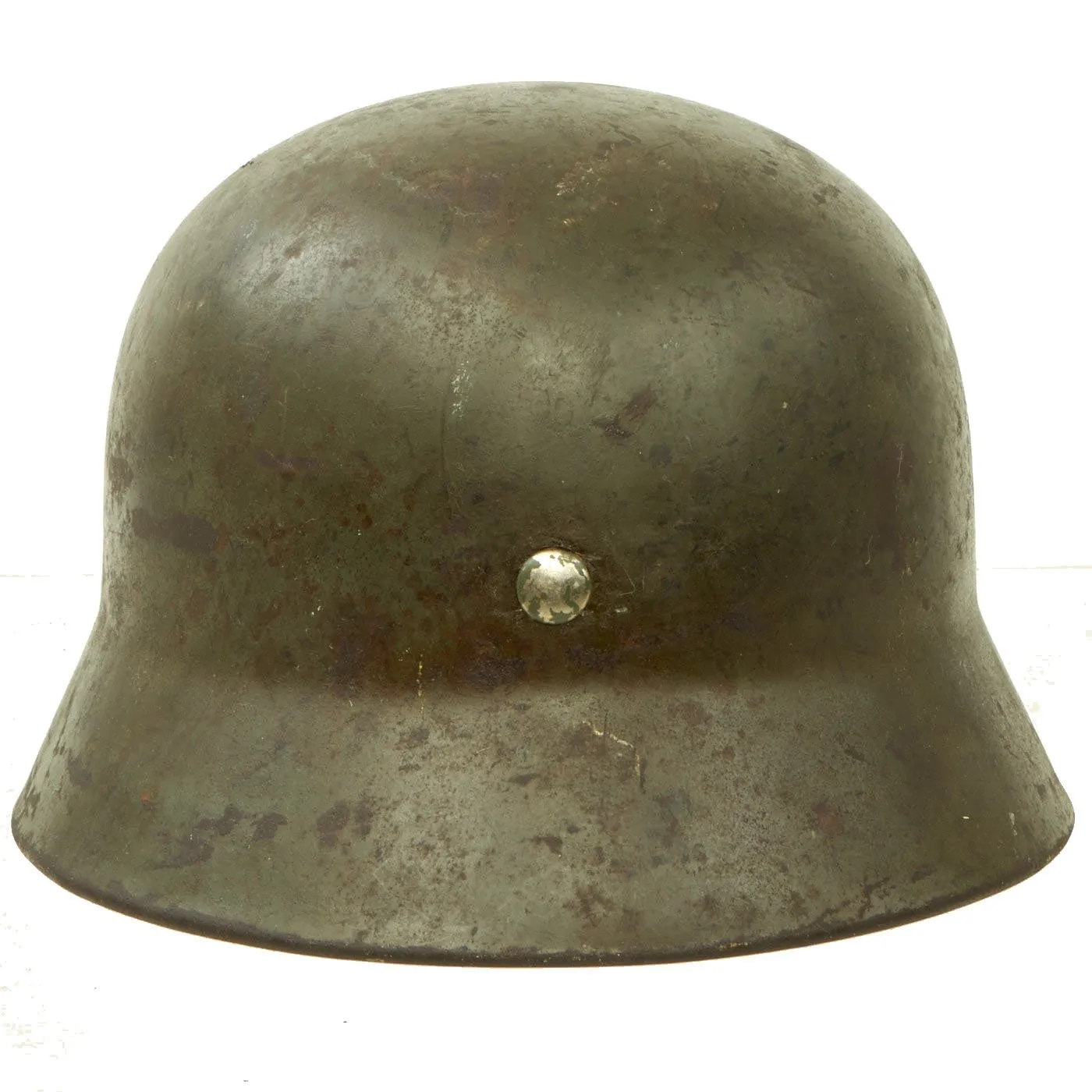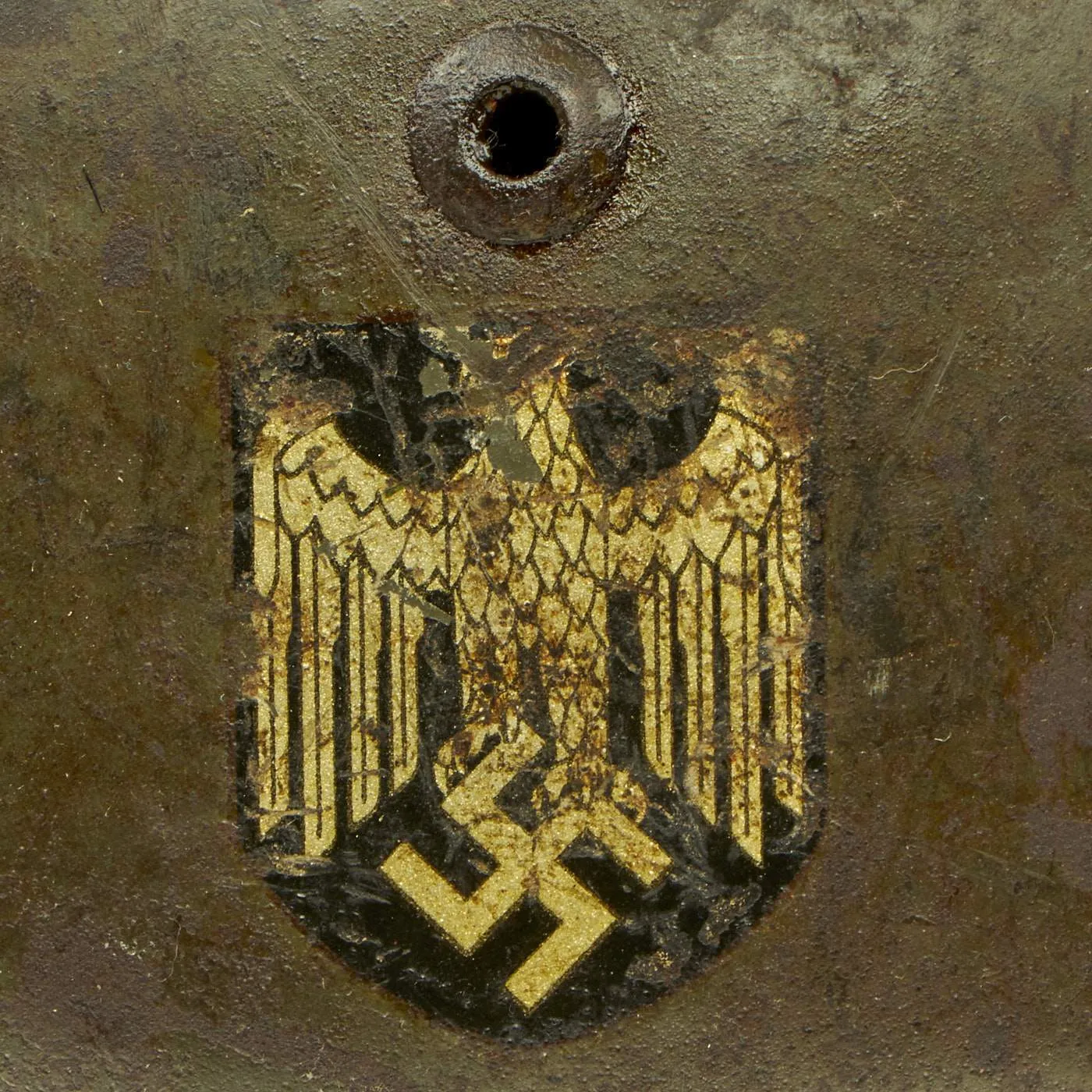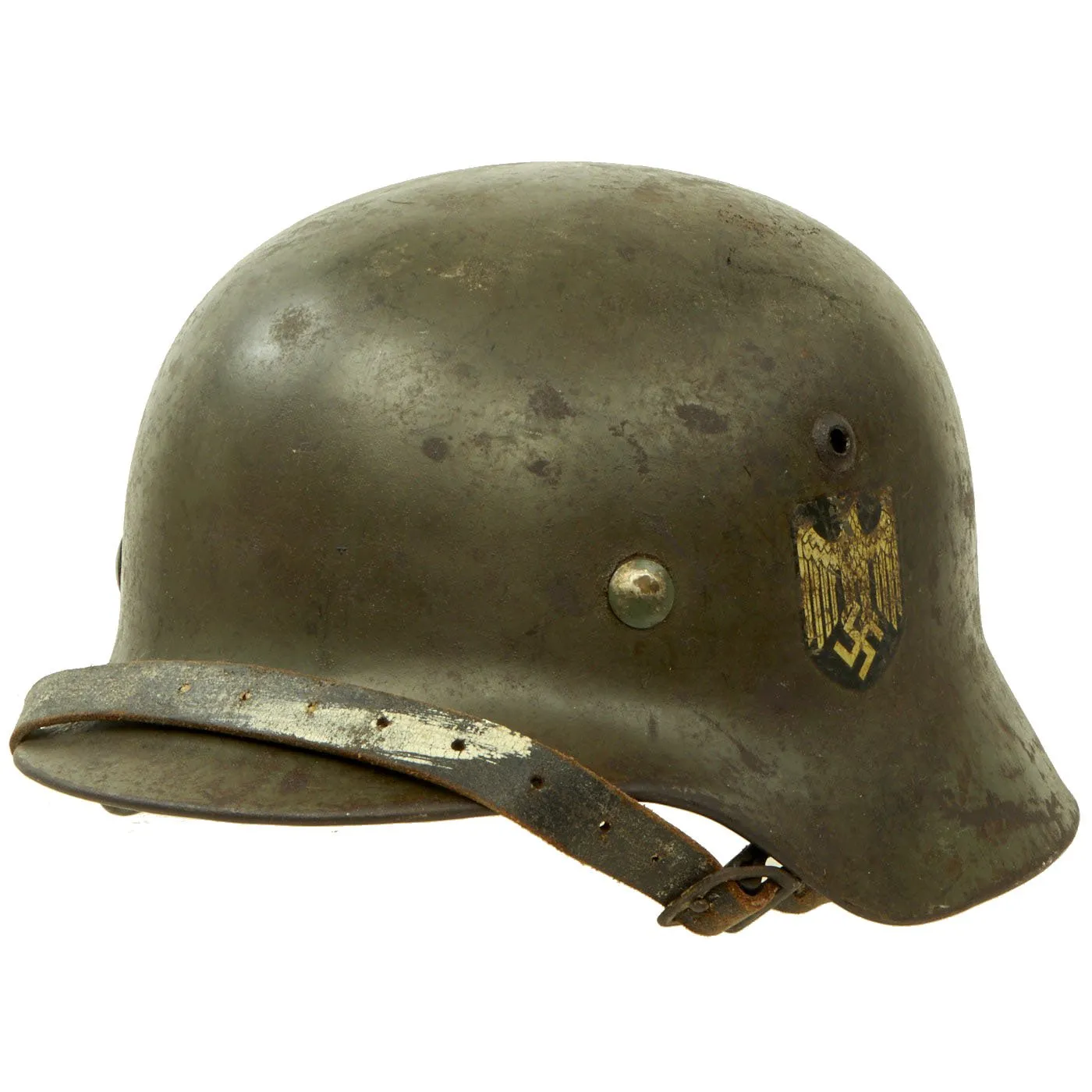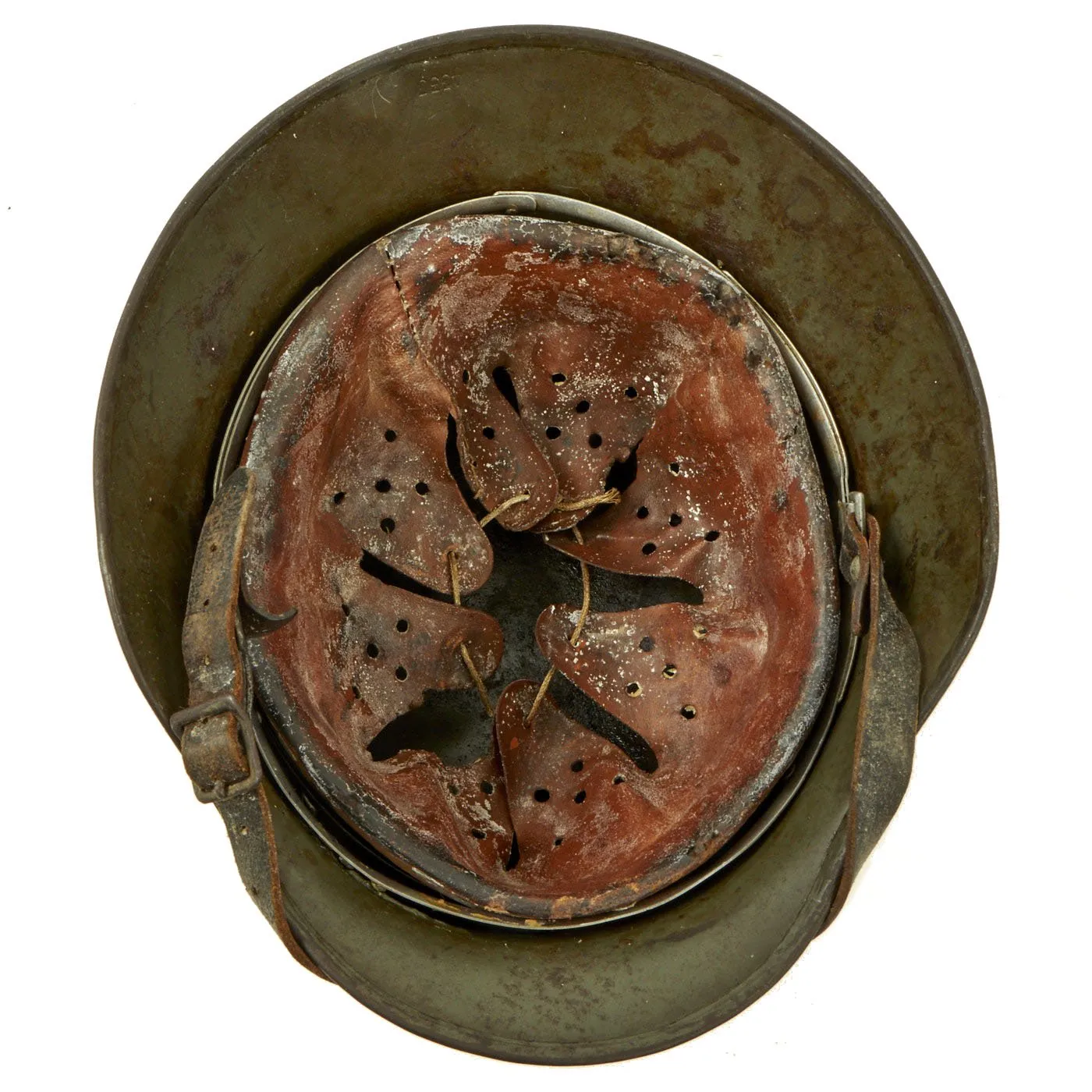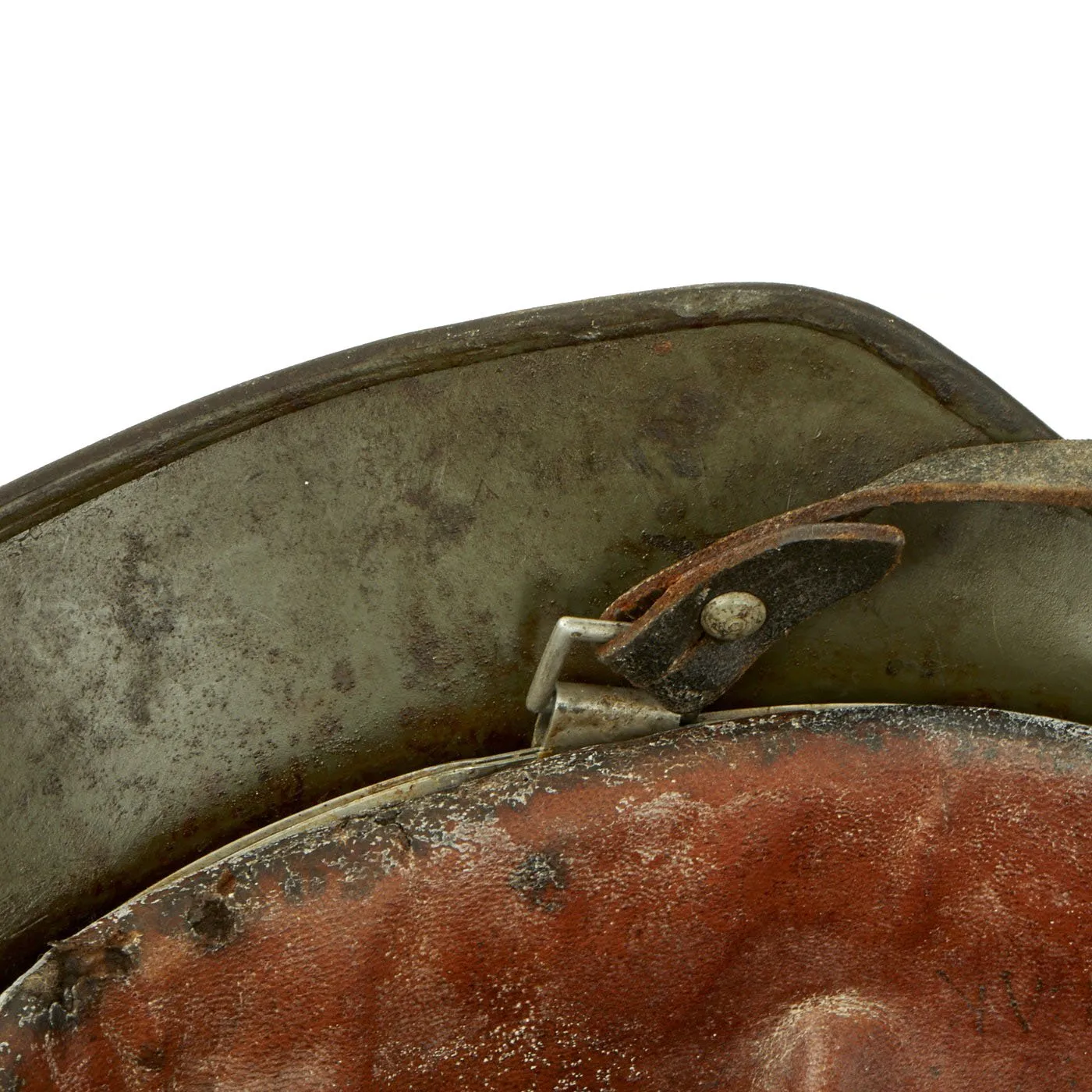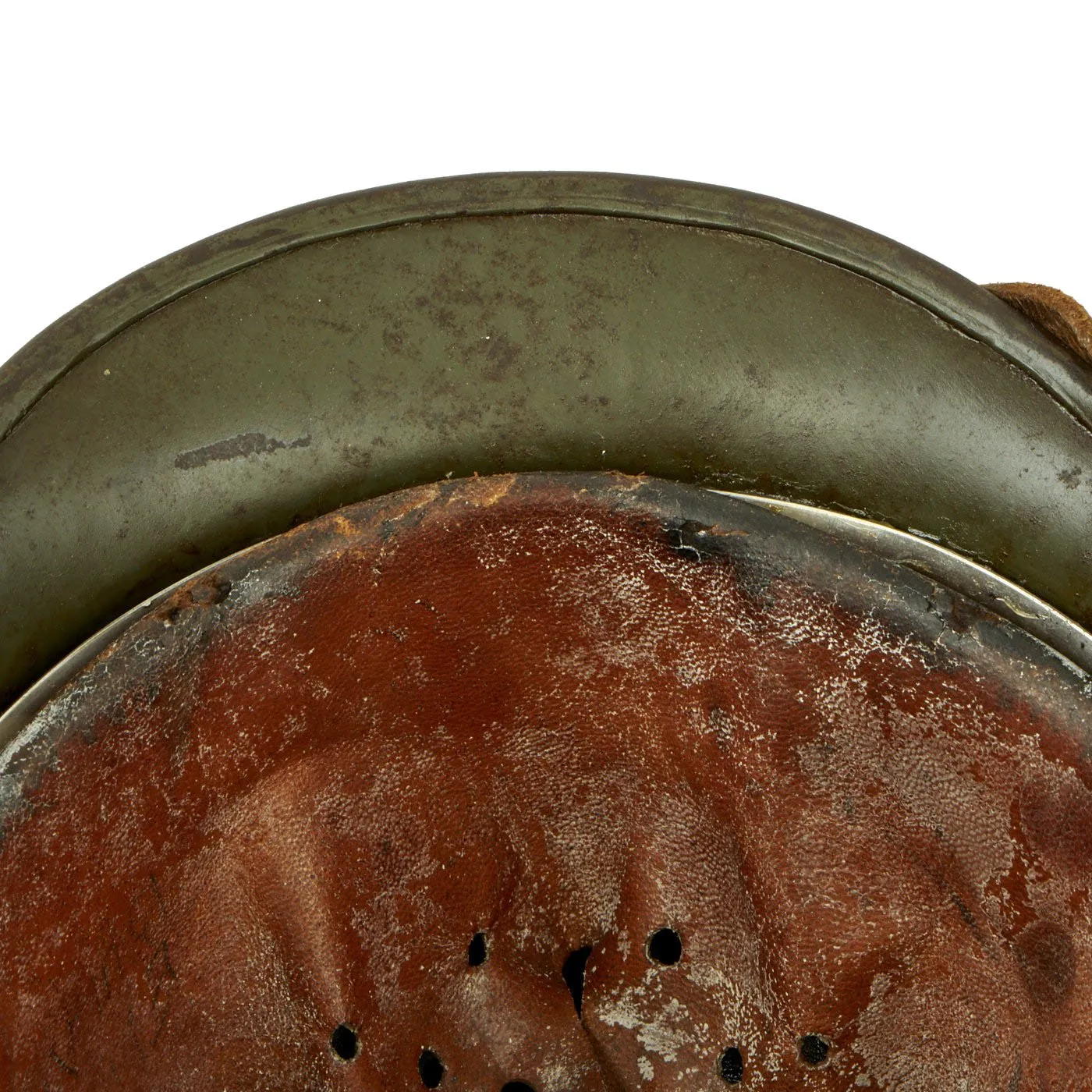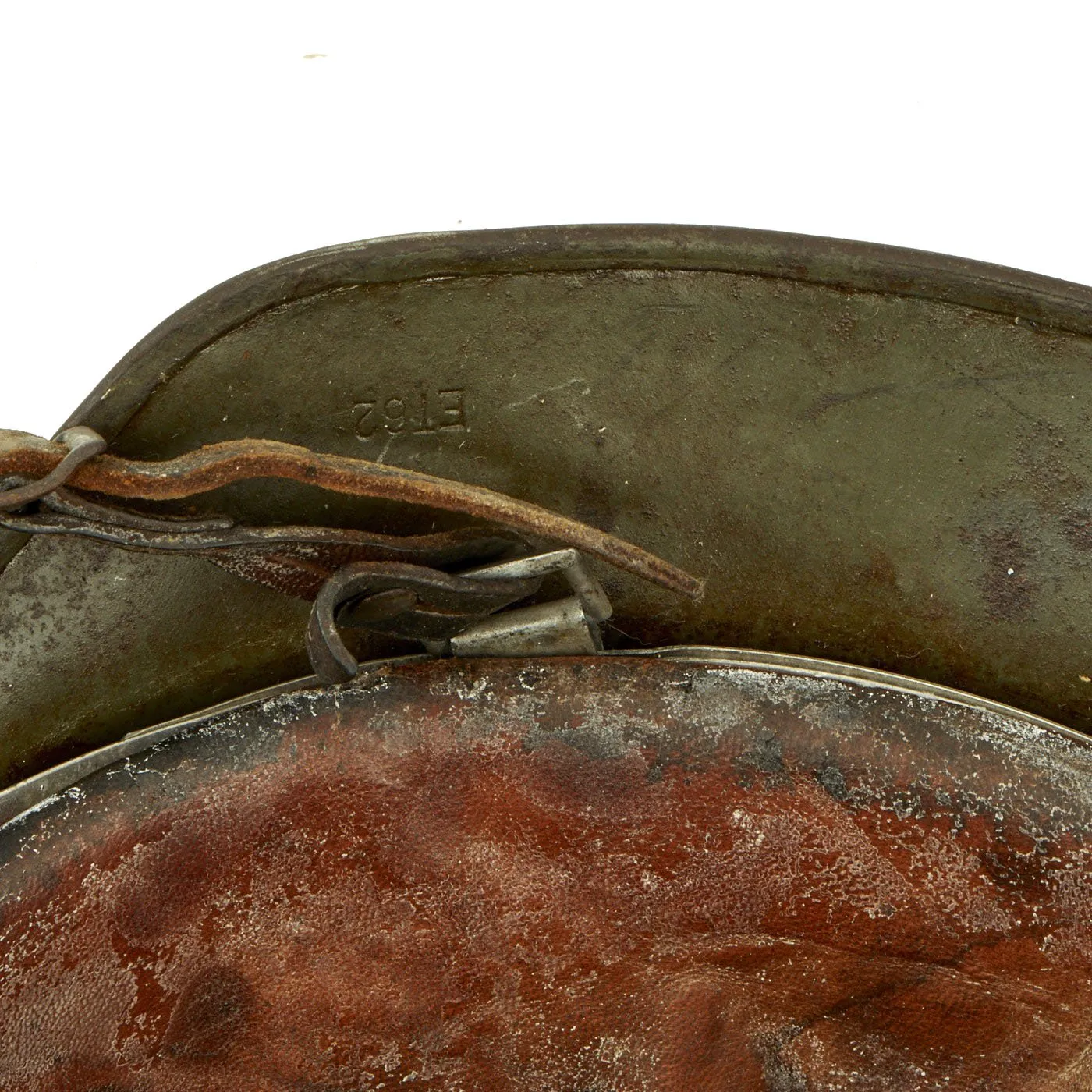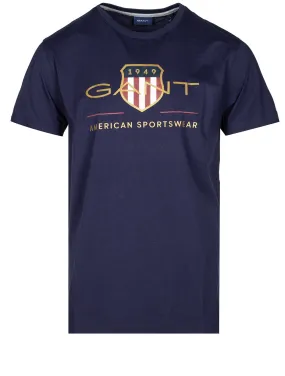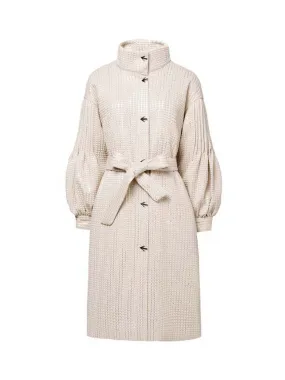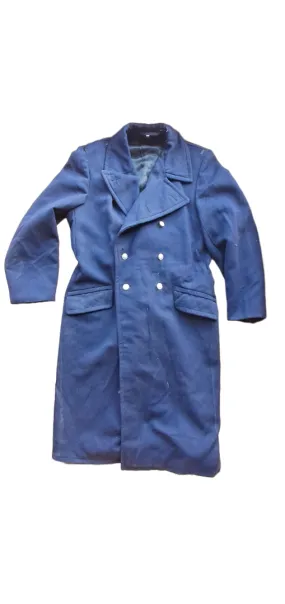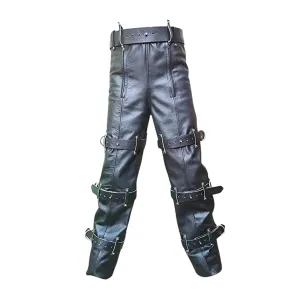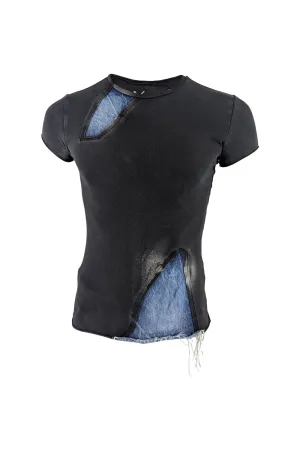Original Item: Only One Available. This is an incredible excellent condition all original example of a German WWII M35 helmet, issued to the Heer (Army). This stamped sheet steel construction helmet retains about 65% of its original paint, and definitely shows service wear. It is painted in a very nice early Apfelgrün (apple green) paint, which is the early war color with more green in the mix. The use of the second decal was discontinued in 1940, and in 1943 it was ordered that helmets with the national colors have them removed. The decal on this helmet however escaped that fate, so it still has both decals.
The left side of the helmet features a Heer eagle decal, which is retained about 75%, still bright and reflective, with some chipping near the top. The right side of the helmet features a national colors decal, which is retained about 60%, with a good amount of the bottom half removed. This is a really nice example of an original helmet with lots of patina!
The reverse, interior, neck guard apron is batch number stamped 4533, and the interior, left side, apron has a stamped manufacturer’s code and size, ET62. This indicates it was manufactured by Eisenhuttenwerk AG of Thale, located in the Harz district in Saxony, Germany in size 62. Size 62 is a nice smaller size that can accommodate liners from 54cm to 55cm or US 6 3/4 to 6 7/8.
All three liner retaining pins are intact, with exterior paint retained to a varying extent. The interior of the helmet still has the original M31 leather liner with all eight of its fingers intact, with the original top tie. The liner leather is in good shape and still supple, though there is sweat staining as well as salt crusting from use. There is also some cracking around the rim. The correct early issue aluminum liner band is marked on the left side with 62 n.A. / 54, indicating a size of 54cm for a shell sized 62.
The right side displays the full manufacture information, as well as a date:
Metalwarenfabrik
1942
F. W. M.
The band is the correct reinforced pattern, with an extra layer of aluminum around the sides to support the chin strap. Soon after this, manufacturers moved to the galvanized steel band.
Attached to the liner is a very nice original chin strap, with is the mid war issue type with galvanized steel buckles and studs. It may be a wartime replacement, but it definitely shows wear that matches the rest of the helmet and liner, so we feel that it is probably original.
Overall a very nice 100% genuine M35 Double Decal Heer Army helmet! It looks great, and all components are totally correct! This is an item that will only continue to appreciate in value over time!
The first "modern" steel helmets were introduced by the French army in early 1915 and were shortly followed by the British army later that year. With plans on the drawing board, experimental helmets in the field, ("Gaede" helmet), and some captured French and British helmets the German army began tests for their own steel helmet at the Kummersdorf Proving Grounds in November, and in the field in December 1915. An acceptable pattern was developed and approved and production began at Eisen-und Hüttenwerke, AG Thale/Harz, (Iron and Foundry Works), in the spring of 1916.
These first modern M16 helmets evolved into the M18 helmets by the end of WWI. The M16 and M18 helmets remained in usage through-out the Weimar Reichswehr, (National Defence Force, Circa 1919-1933), era and on into the early years of the Third Reich until the development of the smaller, lighter M35 style helmet in June 1935.
In 1934 tests began on an improved Stahlhelm, whose design was a development of World War I models. The Eisenhüttenwerke company of Thale carried out prototype design and testing, with Dr. Friedrich Schwerd once again taking a hand.
The new helmet was pressed from sheets of molybdenum steel in several stages. The size of the flared visor and skirt was reduced, and the large projecting lugs for the obsolete armor shield were eliminated. The ventilator holes were retained, but were set in smaller hollow rivets mounted to the helmet's shell. The edges of the shell were rolled over, creating a smooth edge along the helmet. Finally, a completely new leather suspension, or liner, was incorporated that greatly improved the helmet's safety, adjustability, and comfort for each wearer. These improvements made the new M1935 helmet lighter, more compact, and more comfortable to wear than the previous designs.
The Army's Supreme Command officially accepted the new helmet on June 25, 1935 and it was intended to replace all other helmets in service.
More than 1 million M1935 helmets were manufactured in the first two years after its introduction, and millions more were produced until 1940 when the basic design and production methods were changed.




